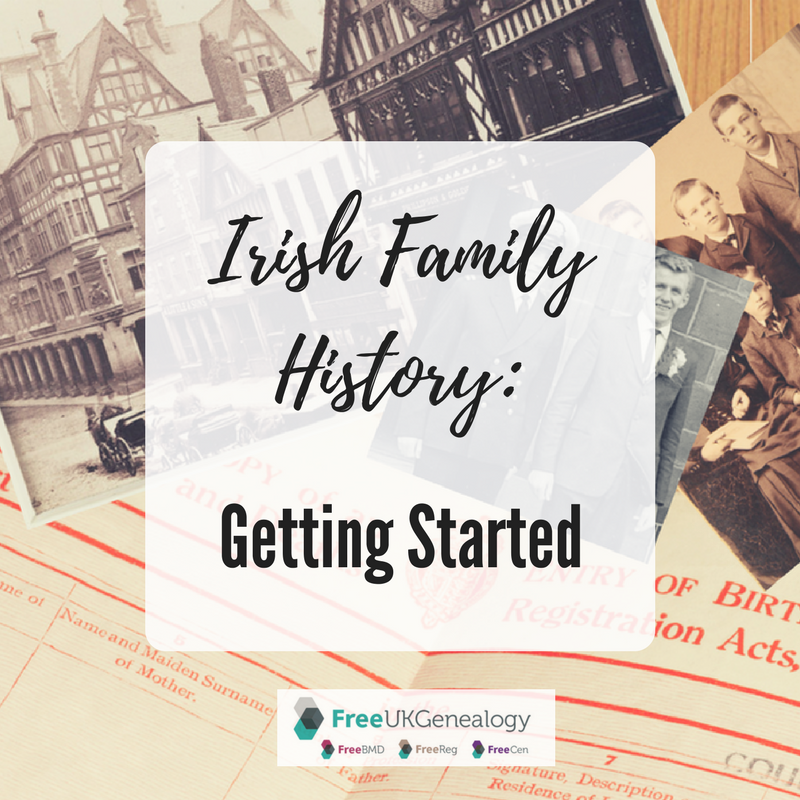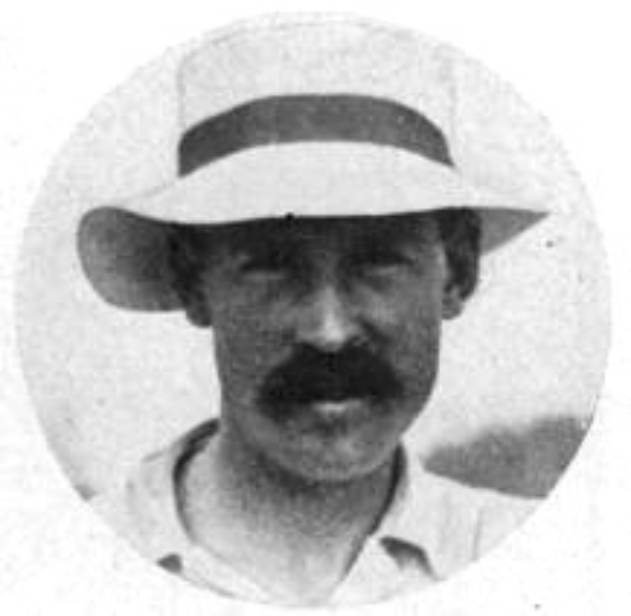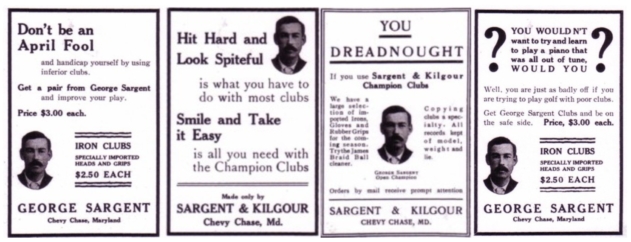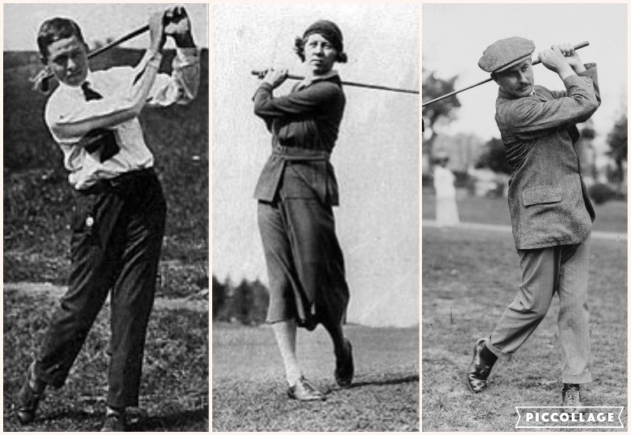Irish Family History: Civil Registration
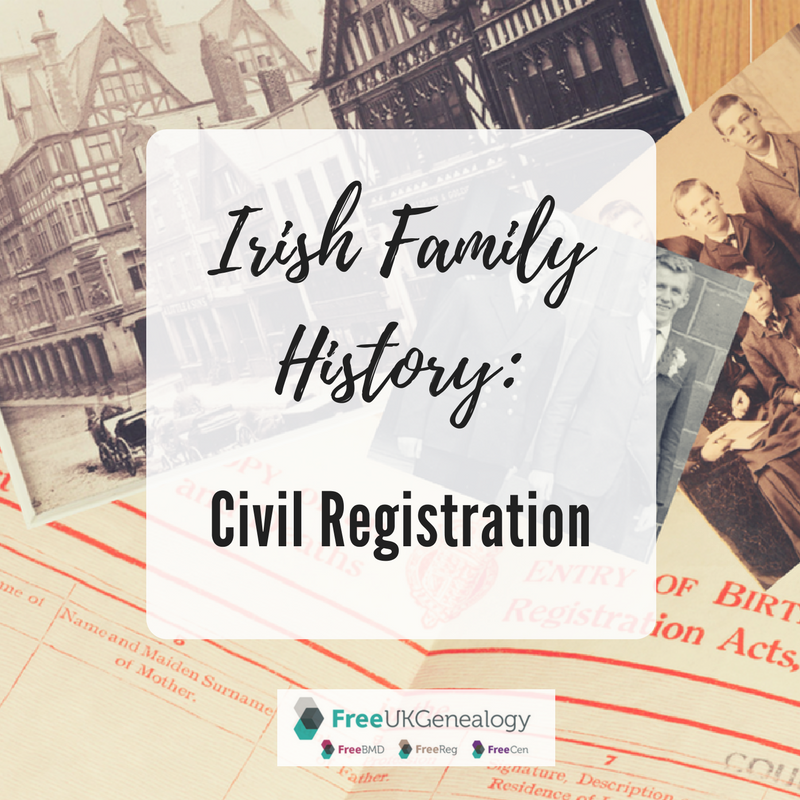
Welcome to the second instalment on Researching Your Irish Family History. Here, Nicola Morris explains how you can access civil registration records online to help trace your Irish ancestors.
NB: Ancestry and Find My Past are free to search, but require subscriptions to view records.
*****************************************************************************************
From 1845 non-Catholic marriages in Ireland were registered with the civil authorities but it wasn’t until 1864 that registration of all births, deaths and marriages became compulsory. Even though civil registration was compulsory from 1864 it is estimated that up to 15% of births and marriages went unregistered in the early years of civil registration and as many as 30% of deaths were not registered with the civil authorities.
Births were usually registered by a family member, neighbour or midwife who had been in attendance. It was compulsory to register a birth within the first three months or a late registration fine was incurred. It is not uncommon to find a family who registered a child’s birth six months or more after the event but who changed the date of birth of the child to fall within the previous three months. This means that you may find evidence of a child who was baptised in March but whose birth registration gives a date of birth in September of the same year. The baptismal record is a more accurate reflection of the true date of birth of the child.
Using Irish birth registers
Some families did not register the births of their children either on time or late. This may have been because the fee for registration was beyond their means at the time. Births were registered locally in the registrar’s district.
These registers were then sent to Dublin to be copied. Some births were accidentally excluded from the Dublin copies during this process and are now missing from the national civil birth register. They can be found by inspecting the original registers, but most of these registers have now been archived and stored beyond access.
Birth registrations or certificates record the date and place of birth, the name and sex of the child, the name, address and occupation of the father and name and maiden name of the mother as well as the name and address of the informant. In some cases the relationship of the informant to the child is stated and you can sometimes find maternal grandmothers or aunts who were present and who registered the birth.
Using Irish marriage registers
The registration of marriages was the responsibility of the parish priest or celebrant of the marriage and it is not uncommon to find marriages in church registers that are missing from civil registers, an omission by the parish priest, who failed to inform the civil authorities of the marriage.
Marriage registrations or certificates are the most informative. They record the name and denomination of the church in which the marriage took place, the name, age, marital status, occupation and address of the bride and groom as well as the names and occupations of their fathers, the witnesses and the name of the minister who carried out the ceremony. Most 19th and early 20th century marriage certificates record the ages of the bride and groom as full, meaning that they are over 21 years of age. Those under 21 are referred to as minors or their age is given.
Witnesses to a marriage were often siblings, cousins or peers of the bride and groom, and much less frequently parents. Witnesses to the marriage of a minor may have been parents of the bride and groom.
Using Irish death registers
Deaths were usually registered by a family member or neighbour who was present or by the administrator of a hospital or the institution where the death took place. Death registrations can be the least informative of the three registrations. A death certificate will record the date and place of death, the name, address, age, marital status and occupation of the deceased, cause of death and the name of the informant. The informant was not always a family member. Unlike Scottish, American and some Australian death registrations, no other family members are cited on an Irish civil death registration. The death registration of a person with a common name who died in a hospital or other institution, may not contain enough information to establish who they were or to identify their spouse or parents.
The records of civil registration for Ireland are held by the General Register Office. There is a public research room at Werburgh Street in Dublin city where researchers can search the index books for relevant entries. The index books commence in 1845 for non-Catholic marriages. From 1864 there are indexes for all births, deaths and marriages. Between 1864 and 1878 all entries for each year are listed alphabetically by surname, with some late registrations and overseas events written into the back of the book. From 1878 each book is divided into four quarters, so when doing a manual search you must make sure you check the book four times, and a fifth time for late and other entries at the back of the book.
There is a small fee for searching the index books in person at the General Register Office (€2 for 5 consecutive years) and a fee of €4 for each copy. However, if you cannot make it to Dublin you can access the majority of these records online.
Where can I find Irish birth, death and marriage registers?
The first set of records from the Irish General Register Office to be indexed formed part of the IGI (International Genealogical Index) where abstracts from birth registrations from 1864 up to about 1880 were transcribed. These records can be found on www.familysearch.org and at Ancestry UK. However, only the name of the child, date of birth and names of the parents appear in this collection and the townland address of the family and father’s occupation are not recorded, so the full birth registration should be sought for this additional information.
The Church of the Latter Day Saints, who hold microfilm copies of the civil birth, marriage and death index books have transcribed the index books from 1845 (non-Catholic marriages) up to 1958. These indexes were transcribed by volunteers and there are some errors and omissions. The late registration entries and overseas and army births, deaths and marriages are also excluded from this collection. They have been published online at www.familysearch.org and record the name of the party, the year and registration district, volume, page and quarter. The index reference is necessary to obtain a copy of the original registration. These can be ordered from https://www.welfare.ie/en/Pages/Apply-for-Certificates.aspx, but Timeline Genealogy Clerk offers a service whereby genealogical researchers who have found records in the index can order in a more straightforward way: https://timeline.ie/irish-genealogy-clerk/irish-bmd-records/.
The Irish Government website www.irishgenealogy.ie have published the indexes for civil registration as follows:
Index of Births: 1864 -1916
Index of Marriages: 1845-1941
Index of Deaths: 1864 – 1966
The original registers have also been published online for the following dates:
Births: 1864-1916
Marriages: 1870-1941
Deaths: 1878-1966
This means that if you find an index entry for a marriage in 1875 you can click through to the image of the original registration. This is a free website and there are no fees for searching, viewing or downloading the records.
The website www.rootsireland.ie represents the collections of church and civil records for each county heritage centre in Ireland. The records for each centre vary from county to county. Some counties have indexed the original birth, marriage and death registers using the local registration books. This means that an event that was recorded in the original local register but was not copied to the copy registers in Dublin might be found in this collection. This is a pay site and not every county is fully represented. It is worth investigating the extent of the collections for the county you are interested in before searching this site. However, if you do find this site holds relevant records for your research, you will find that the search function is very user friendly. It is possible to search the civil marriage records for all children who married with a father named Edward Murphy or all O’Connor deaths that took place in the townland of Cloncurry. This site is predominantly a collection of church records and we will tackle the many search options available in a later post on parish records.
The above are the main websites where researchers can access the records for civil registration for Ireland. After 1922 the records for Northern Ireland were kept separately and can be accessed online at GRONI: (General Register Office of Northern Ireland) https://www.nidirect.gov.uk/articles/search-gronis-online-records where you will find all records relating to registration districts that became Northern Ireland from 1864 into the 20th century, with images of births over 100 years old, marriages over 75 years old and deaths over 50 years old.
If you are starting to investigate your Irish family history and your ancestor was born or married or died in Ireland after 1864, you will need to investigate the records of civil registration. The best place to start is with the two free websites www.familysearch.org and www.irishgenealogy.ie
Where can I research my Irish family for free?
The search engine at www.familysearch.org takes into account a far broader variant spelling of surnames and a search of the “Ireland civil registration indexes 1845-1958” should give you quite a comprehensive list of index entries (bearing in mind that late registrations and overseas and army registrations will be missing from this collection). You can then compare this finding with the civil records listed for the same search at www.irishgenealogy.ie. The reason for this is that www.irishgenealogy.ie will only list results for a very specific spelling of a surname, with few variants. See how the two lists compare to make sure you are not missing birth, marriage or death entries on either site.
For example, the surname McDonagh comes in numerous variants; MacDonagh, McDonough, McDonogh, MacDonugh, etc. At www.irishgenealogy.ie you may find that only those index entries for McDonagh and McDonogh appear, while at www.familysearch.org you may find other variants such as MacDonough are also included. Surnames with the prefix Mc and O’ can also be a problem at www.irishgenealogy.ie. In some cases you may need to put a space between the prefix and the name, so Mc Donagh will turn up a different set of results to McDonagh. In some cases on both sites the names have been recorded as M’Donagh, making them harder to find.
By using the two indexes both of which are free to search online, you will get most comprehensive record of entries from the original index, including name variants. Always cast your net as wide as possible; it is easy to exclude people from your search as it progresses.
The only benefit to the indexes at Find My Past IE and Ancestry UK are their marriage finders. Both websites identify brides and grooms that were registered on the same page. This can make it easier to find a relevant marriage. However, the marriages published online at www.irishgenealogy.ie from 1870 to 1941 record the bride and groom in the index entry, bypassing the need for the Ancestry and Find My Past marriage finder for marriages during this particular period.
Where can I find Irish Civil Registration Information?
The records for civil registration are organised by Registration District. A registration district is the same as a Poor Law Union. This is because the dispensary doctors of the poor law union were usually the local registrars. If you are searching for ancestors in Ireland it is always helpful to know their registration district, making it much easier to identify relevant civil birth, marriage and death records. Just because your ancestor married in Co. Kilkenny, does not mean that their marriage will be registered in the registration district called Kilkenny. Co. Kilkenny contains several other registration districts.
Each county is made up of a number of registration districts and Clare Santry has published a list of the districts for each county on her website: https://www.irish-genealogy-toolkit.com/Ireland-civil-registration.html.
Each registration district is divided into registrar’s districts, but the registrar’s district is not used in the General Register office indexes. However, it is used on the website www.rootsireland.ie so it may be helpful to identify the registrars’ districts within each registration district.
If you have a townland address for your family or if you have identified them in the 1901 or 1911 census in Ireland, you can find the Union or Registration District in which they were living by checking the index of townlands or take a look at the enumerators return on the census, which will record the townland, civil parish, registration district and county. You can also use the place name search on John Grenham’s website; www.johngrenham.com where you will find lists of all townlands in each poor law union (registration district) or you can search by townland to identify the registration district in which it is located. This site will also list the registrar’s districts within each registration district or union.
Bear in mind that marriages usually took place in the parish of the bride, so will most likely be registered in her home registration district. Deaths were registered in the district where the death took place. For example, I found a death registration for a man who died on the side of the road while travelling back from the market in Dundalk, Co. Louth, to his home in Monaghan. His death was registered in Dundalk, where he died, making him very difficult to find when his death did not appear in his local registration district.
Although a townland address may have officially been located in one registration district, the address may have been more convenient to a neighbouring district. If you don’t find your ancestor in the district in which they should have been registering events, it may be worth trying the neighbouring districts, even if they cross a county border.
It is always worth obtaining a copy of the original registration. Many published family trees on websites like Ancestry simply contain a reference to the index entry, confirming that a birth or marriage was registered with the civil authorities. The actual registration or certificate will contain a great deal more information and sometimes surprising clues, such as the name of an informant or an address or occupation, which may prove beneficial to your research. The fact that the majority of these records are freely available online means that there is no excuse for not tracking down the original registration, if, of course, the event was actually registered.
******************************************************
Nicola Morris M.A.G.I is a professional genealogist and member of Accredited Genealogists Ireland. She is the director of Timeline Research Ltd, one of Ireland’s leading genealogical research companies. Nicola has undertaken the Irish research for WDYTYA? in the UK and US and has appeared in numerous episodes. She was also the presenter of the first series of the Genealogy Roadshow broadcast in Ireland in 2011.
